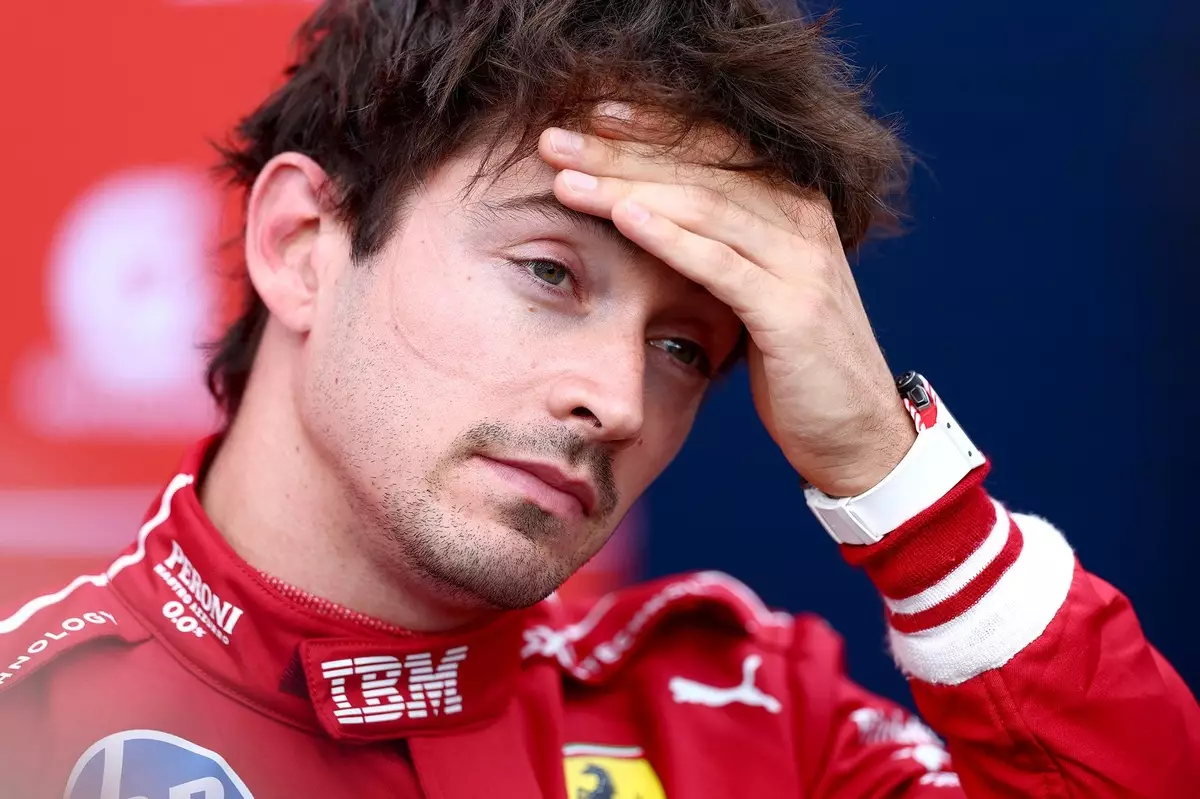Ferrari’s recent performances in Formula 1 reveal a team caught in a cycle of fleeting brilliance followed by disappointing regressions. Despite significant technical upgrades and renewed efforts to regain their competitive edge, the results suggest that Ferrari remains a shadow of its former racing prowess. The sprint race at the Belgian Grand Prix exemplifies this paradox. Leclerc’s initial surge, a showcase of quick reflexes and aggressive strategy, quickly dissolved into a decline that left fans and critics questioning the team’s true potential. It’s no longer about mere speed; it is about understanding the nuanced interplay of aerodynamics, car setup, and driver confidence — aspects Ferrari seems to struggle with simultaneously.
The narrative remains familiar: a promising start, an early position held through skill and daring, only for the car’s deficiencies to manifest as the laps unfold. Leclerc’s move into third at Les Combes, powered by slipstream momentum, signaled hope. Yet, by lap four, Norris’s superior pace overtook him, an unmistakable indication that Ferrari’s latest upgrades missed the mark on elevating speed and consistency. This pattern underlines the core issue that has dogged Ferrari throughout the season: a persistent inability to convert qualifying performance into race dominance. It’s as if the team’s technical ambitions outpace their practical execution, leaving the drivers to fight a losing battle against inherent shortcomings.
Upgrades That Promise More Than They Deliver
Ferrari’s recent upgrade package, involving a radical overhaul of the underfloor and rear suspension geometry, demonstrates the team’s relentless desire to innovate. An entirely new underfloor — incorporating fresh profiles within the tunnels and diffuser — and a circuit-specific low-drag wing spark optimism. Yet, the tangible gains have been minimal. The upgrades seem to be a case of bravado, a costly gamble that hasn’t translated into the performance leap needed to challenge Red Bull or McLaren consistently. Instead, they highlight the difficulties of bridging the gap between theory and real-world racing.
This disconnect is starkly illustrated by the driver’s feedback. Leclerc’s comments reflect a somber acknowledgement: he perceives his car’s potential as largely tapped out. Meanwhile, Hamilton’s experience at Spa underscores that even veteran drivers are perplexed by the subtlety of these upgrades. Hamilton’s attempt to progress from 18th to 15th, amid a processional race, underscores the broader theme — advancements in hardware alone aren’t sufficient without a commensurate evolution in performance management and strategic finesse.
Ferrari’s technical efforts seem hamstrung by an inability to translate what they develop in the workshop into tangible improvements on the track. The questioning glances and philosophical musings from drivers and engineers alike suggest a team in a complex chess game, where every move must be precisely calculated and executed with near-flawless precision — a standard Ferrari has not met this season.
The Mental Toll and Future Outlook
One cannot ignore the psychological impact of Ferrari’s ongoing struggles. Leclerc’s comments — “there’s some learning to take away” — reveal a mixture of resilience and frustration. It’s evident that the team’s frustrations stem from a gap between expectations and realities. While the desire to fight at the front burns fiercely, the tangible results remain elusive, creating a climate of doubt and pressure.
The racing calendar’s remaining races will be pivotal not just for points and podiums but also for morale. Ferrari’s investment in upgrades signals ambition, but without a clear, consistent upward trajectory, such efforts risk diminishing belief both within the team and amongst its fanbase. The challenge lies not merely in engineering solutions but also in fostering the mental strength needed for drivers to push through adversity and for the entire team to refine their strategic approach.
Ultimately, Ferrari’s current struggle is a reflection of broader Formula 1 dynamics: the delicate balance between innovation, execution, and psychological resilience. For Ferrari to reclaim its place among the elite, it must go beyond technical upgrades and focus on holistic development — addressing the intangible factors that determine race day success. Until then, Ferrari remains caught in a cycle of hope and disappointment, searching tirelessly for a breakthrough that seems ever just out of reach.

